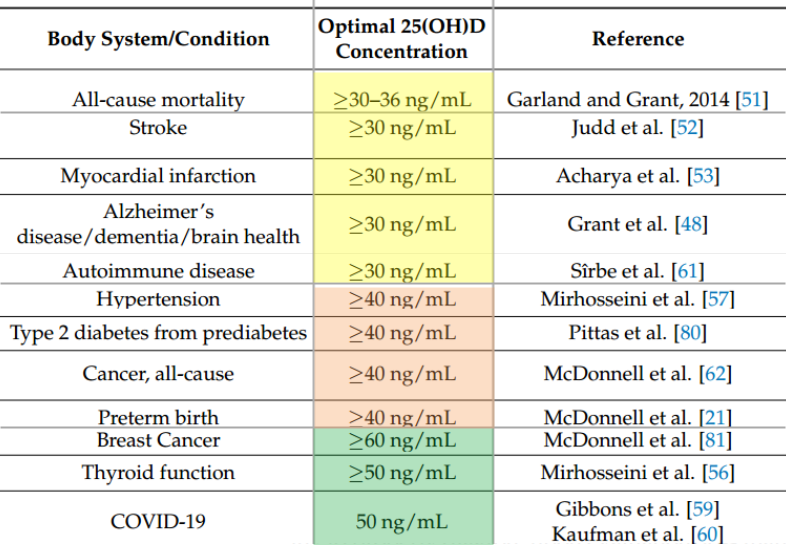Vitamin D levels vs disease and Best Practices
Exposure to a Vitamin D Best Practices Toolkit, Model, and E-Tools Increases Knowledge, Confidence, and the Translation of Research to Public Health and Practice
Nutrients 2023, 15, 2446. https://doi.org/10.3390/ nu15112446
Beth S. Sanford h* , Jennifer L. Aliano 2®, Courtney S. Omary *©, Sharon L. McDonnell 2©, Samantha M. Kimball 2 and William B. Grant 3
School of Nursing, Rasmussen University, 4012 19th Avenue South, Fargo, ND 58103, USA
GrassrootsHealth Nutrient Research Institute, Encinitas, CA 92024, USA;
jen@grassrootshealth.org (J.L.A.);
samantha@grassrootshealth.org (S.M.K.)
Sunlight, Nutrition, and Health Research Center, San Francisco, CA 94164-1603, USA; wbgrant@infionline.net * *Correspondence: beth.sanford@rasmussen.edu
- The Preliminary Results of This Paper Were Presented at the 15th National Doctors of Nursing Practice Conference in Tampa, FL, USA, 3-5 August 2022.



Preventable vitamin D deficiency (VDD) is a global health concern. The prevention, early detection, and treatment of vitamin D deficiency aligning with serum 25-hydroxyvitamin D concentration recommendations of 40-60 ng/mL (100-150 nmol/L), provided by an international panel of 48 vitamin D researchers, would result in significant health benefits and cost savings to individuals and society. However, research shows that healthcare professionals lack knowledge and confidence in best practices with respect to vitamin D. A vitamin D toolkit was developed that included a model for decision-making support, e-tools, and accompanying resources and was implemented using an online, asynchronous learning management system. This pre-test, post-test, and follow-up survey study design aimed to increase nurses' and dietitians' levels of knowledge and confidence regarding vitamin D, aid in their translation of evidence into spheres of practice and influence, and help them identify translation barriers. The completion of the toolkit increased the participants' (n = 119) knowledge from 31% to 65% (p < 0.001) and their confidence from 2.0 to 3.3 (p < 0.001) on a scale of 1-5. Respondents reported using the model (100%) as a framework to successfully guide the translation of vitamin D knowledge into their sphere of influence or practice (94%) and identifying translation barriers. The toolkit should be included in interdisciplinary continuing education, research/quality improvement initiatives, healthcare policy, and institutions of higher learning to increase the movement of research into practice.
📄 Download the PDF from VitaminDWiki
40-150 ng of Vitamin D need to treat health problems
{include}
